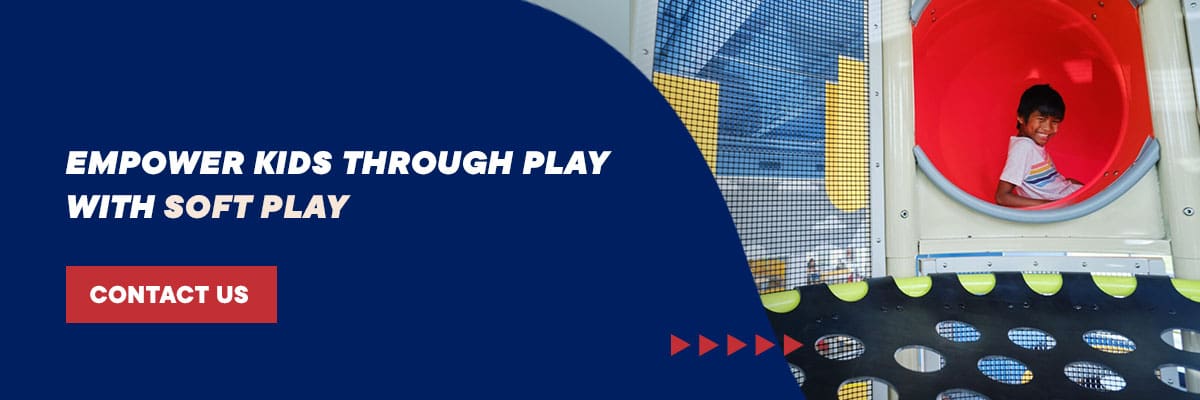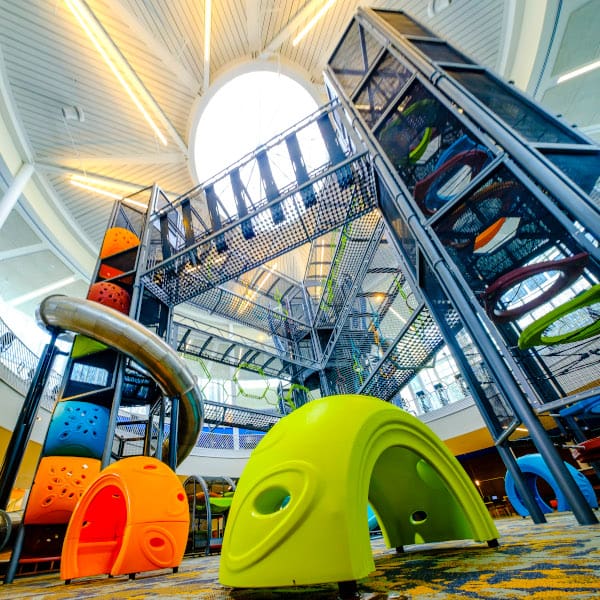The Benefits of Play Therapy for Happy, Healthy Kids
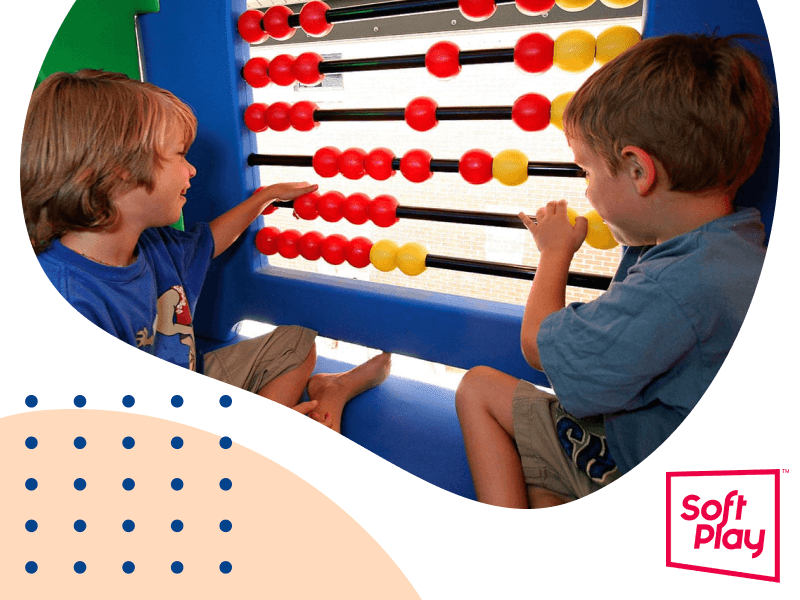
The Benefits of Play Therapy for Happy, Healthy Kids
The joy of watching a child play! We marvel at their imagination as they run, jump, create and tell fantastical stories. Play is about more than fun — it’s how kids learn to connect with the world around them. For some, play is a way to deal with complex emotions or situations.
What is therapeutic play? This form of therapy lets kids express their feelings, conquer fears and build resilience in a supportive environment. Imagine a vibrant playground filled with colors, toys and creativity — this is where healing begins. Let’s explore the magical benefits of play therapy.
What Is Play Therapy?
Play therapy harnesses play as a medium for kids to work through issues and convey emotions. It meets kids at their level, letting them communicate their feelings without speaking. A therapist or counselor can then interpret these cues. Playground therapy uses equipment like foam sculptures or play towers to develop motor skills. It helps kids with disabilities improve their movement and physical strength.
The Purpose of Play Therapy
The aim of play therapy depends on the child’s needs. Some kids may need help processing a traumatic event, while others might benefit from learning how to socialize. The goals of therapy may include:
- Communicating emotions: Recreational therapy lets kids identify and express their feelings in a comfortable space.
- Developing coping skills: Specific activities can help kids learn effective coping strategies. Therapy gives them the tools to deal with stress or difficult situations.
- Resolving conflict: Kids can learn negotiation, empathy and compromise through interactive play. This therapy helps them navigate conflicts.
- Self-exploration: Playing encourages kids to explore their identities and personal experiences.
- Modifying behavior: Therapists use play to observe problem behaviors. They can then teach patients better ways of reacting.
Types of Play Therapy
In psychotherapy, there are three main types of play therapy:
- Child-centered play therapy (CCPT): This form of intervention therapy is for kids aged 3 to 10 with behavioral or emotional issues. A therapist guides the child through play. Each item in the playroom lets them tackle certain emotions.
- Non-directive child-centered play (NDCCP): In non-directive therapy, the therapist leaves the child to play how they like without interference or guidance. They encourage the freedom of natural self-expression. It lets the child be who they are without boundaries.
- Cognitive behavioral play therapy (CBPT): In cognitive behavioral therapy (CBT), patients identify negative thought patterns and ways to change them. CBPT introduces therapeutic play. Kids take part in scenarios through play to develop problem-solving behaviors.
What Does Play Therapy Help?
Play can help kids of all ages overcome emotional, physical, behavioral or developmental hurdles. Here are some common issues that play addresses:
Behavioral Issues
Studies show that play therapy can be an effective treatment for attention-deficit/hyperactivity disorder (ADHD). It helps kids develop social skills, self-control, responsibility and self-expression. Playground therapy, in particular, can address ADHD symptoms like hyperactivity or difficulty focusing. Besides ADHD, this therapy can help with depression, anxiety or post-traumatic stress disorder (PTSD).
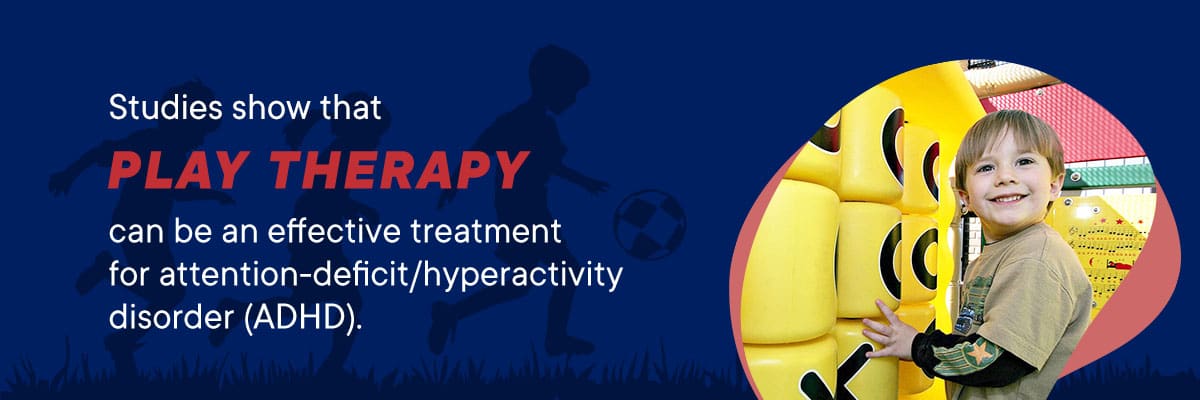
Dealing With Hospitalization
Hospitals can be scary for a child. Play gives kids in hospitals a much-needed outlet to deal with complex emotions. It provides ways to cope with and understand surgery, illness, hospitalization and procedures. Recreational therapy helps in the following ways:
- Gives kids coping superpowers: Play helps little patients cope with circumstances they may not understand. In a playful, secure space, kids can tackle challenging situations with creativity.
- Provides comfort: A playground can add some positivity to an overwhelming experience.
- Prepares them for procedures: Structured play in a hospital lets kids learn about surgeries and procedures. It can inspire relaxation before an operation.
- Releases happy chemicals: Activities like dancing release endorphins, a feel-good chemical that lightens the mood and makes kids feel happier.
Physical Disabilities
Playground therapy helps kids with disabilities strengthen their muscles. Through play, they become more independent and engage with caregivers or friends. It also helps them develop skills like movement, talking and socializing. Play is vital for all growth areas, from physical to socio-emotional.
Play should feel flexible and fun. It allows kids to be spontaneous and use their natural surroundings to enhance their experience.
Developmental Hurdles
Play therapy offers kids with developmental or learning difficulties a fun space to express and explore. It turns learning into a game. Through planned activities, kids can discover how to socialize, communicate and manage emotions. Therapists often personalize each session to match what the child loves. This approach sparks creativity and problem-solving while helping kids feel more at home in their skin.
8 Exceptional Benefits of Play Therapy
Why is play therapy effective? Consider these benefits:
1. Improves Communication
One of the most exciting advantages of play therapy is its ability to teach verbal and nonverbal communication. Creating an engaging environment gives kids the space to express themselves. They learn to articulate emotions through interacting with toys or objects. It helps them put words to their experiences.
Play can even help younger kids who might have difficulty verbalizing their feelings. For example, infants or toddlers can use toys to convey happiness, sadness or frustration. They can start learning how to socialize with others from an early age.
2. Enhances Empathy and Respect
Play therapy helps kids navigate peer relationships. Engaging with others teaches important values like empathy, respect and patience. A child may have to share toys or work together to solve a problem. These activities foster social connection.
3. Develops Problem-Solving Skills
Whether it’s solving puzzles or making mistakes, recreational therapy offers valuable problem-solving opportunities:
- Facing challenges: Certain activities require kids to exercise critical thinking and decision-making. Instead of an adult giving them the answer to a problem, they must figure it out for themselves.
- Experimenting: Play is all about creative exploration. Kids learn to experiment and think outside the box to reach their goals.
- Role-playing: Kids can navigate real-life social interactions or conflicts by role-playing. This activity lets them act out complex situations that they might have trouble communicating.
- Collaboration: Working with others teaches kids the value of being part of a team. They learn to brainstorm and appreciate other’s opinions while building better social skills.
- Learning from mistakes: Trial and error is a brilliant teacher. Play therapy allows kids to make and learn from mistakes, reinforcing resilience.
- Reflection: Therapists can encourage kids to reflect on their choices. They can consider alternatives and understand the consequences of their actions.
4. Builds Coping Mechanisms
Kids are resilient and can bounce back from obstacles, but sometimes, they need a little help. Knowing how to tackle life-changing situations is tough when you lack the tools. Recreational therapy teaches kids positive coping skills to manage stress and anxiety.
These techniques also help kids handle traumatic events like divorce, grief or abuse. They can use toys or playground equipment to process their feelings in a supportive setting. Research shows that trauma sits in the nonverbal areas of the brain. Play therapy moves the experiences to the frontal lobe, where kids can acknowledge them and move forward.
5. Sparks Behavioral Change
Fun learning can make it easier to change behaviors. Play lets kids explore the consequences of damaging actions without judgment. They practice healthy ways to handle emotions like anger or anxiety through role-play and games. Therapists model positive interactions, encouraging kids to mimic these behaviors in real life. Each success in play motivates kids to embrace better habits. Recreational therapy transforms challenges into growth opportunities by reinforcing good behavior with praise.
6. Promotes Physical Development
Regular physical activity for kids improves memory, lowers depression and strengthens bones. The amount of activity a child needs depends on their age. The CDC recommends 60 minutes of daily activity for kids between 6 and 17 years old, while kids from 3 to 5 must be active throughout the day. It can be tough to follow these recommendations for kids with compromised health.
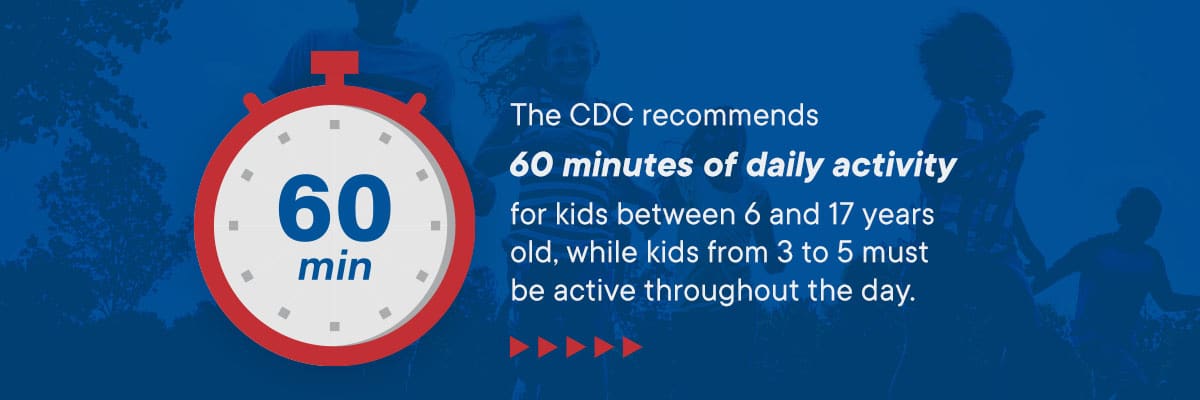
Soft playgrounds allow hospitalized kids or those with disabilities to get fitter and stronger. These playgrounds can improve:
- Flexibility
- Bone density
- Muscle control
- Heart and lung function
- Core, upper body and lower body strength
7. Strengthens Relationships
Play therapy can open up communication channels between the child and family members. Family sessions or cooperative games can give caregivers insights into a child’s feelings, reinforcing bonds and building trust. Playful interactions create shared experiences that foster connection. This reassuring atmosphere makes it easier for kids to share their truth and create lasting connections.
8. Boosts Self-Esteem
When a kid solves a tricky puzzle or shares a complex emotion, it can boost their confidence. Each obstacle they overcome gives them the courage to tackle real-world problems with a positive mindset. Through play, kids develop emotional resilience. They become better at navigating unfamiliar situations and social interactions. Recreational therapy lets them be kids while preparing them for future challenges.
The Role of a Therapeutic Playground in Play Therapy
A therapeutic playground creates a dynamic backdrop for play therapy. It offers kids an exciting place to explore and act out their experiences in a welcoming setting. Therapists can tailor these environments to their ability level. While they engage with the equipment, the therapist observes their actions and expressions.
Both indoor and outdoor playgrounds work well for recreational therapy. The versatility of indoor playgrounds often suits hospitals, clinics and occupational therapy offices. Consider these differences when choosing the ideal playground for your facility:
- Outdoor: Outside activity has many health benefits for kids. It increases vitamin D levels, improves attention and lowers stress. The outdoors also has positive effects on emotional and cognitive health.
- Indoor: A soft indoor playground offers greater flexibility. Therapists or healthcare providers can customize the area to fit the space and patient’s needs. Kids can use indoor playgrounds no matter the weather. These areas are often more accessible to kids with mobility limitations, allowing you to create zones for different abilities.
Best Indoor Playground Therapy Equipment
Do you want to know how to perform play therapy using an indoor playground but are unsure where to start? Soft Play® has over four decades of experience in providing innovative playground solutions. Here’s a roundup of our top equipment for therapy facilities, hospitals or clinics:
1. Custom Slides
Remember the thrill of whizzing down a slide? This piece of equipment can enhance motor skills and balance while skyrocketing kids’ confidence. In a therapy or hospital setting, open bed slides let therapists observe kids as they play. This format comforts kids who prefer open spaces. You can also customize slides to accommodate patient needs. Side rails can make slides more accessible for kids with disabilities.
2. Contained Play Towers
Active play involves motor skills, cognitive function and physical development. This type of play gets kids moving, spending energy while using their brain power. Our innovative contained play areas let kids climb, explore and interact with different features. They’re ideal for therapy or doctor’s offices. Whatever your space requirements, we have a play tower to fit. Our systems range from over 9 feet (small) to over 16 feet tall (large).
Components of play towers include:
- Activity panels
- Climbing elements
- Customizable slides
- Horizontal rollers
- Interactive floor bells
- Observation deck
- Sound features
- Vertical rollers
- Wheel spinners
These towers suit therapy because they let kids engage in stress-lowering activities. Play towers give kids dealing with illness or hospitalization a way to cope with their feelings.
3. Elementz Foam Sculptures
Accessible and versatile sculpted foam structures are a dream for play therapists. They can watch kids as they interact with the sculptures or their peers. Climbing on the structures builds muscle strength while offering kids with sensory sensitivities a place to sit and relax.
Our Elementz line of foam sculptures incorporates tunnels, ramps and climbing features, helping to develop motor skills. You can also create elements according to your needs. We coat our foam structures with a durable, rubber-like substance to keep the equipment soft. The antibacterial finish provides a more sanitary place for kids to play.
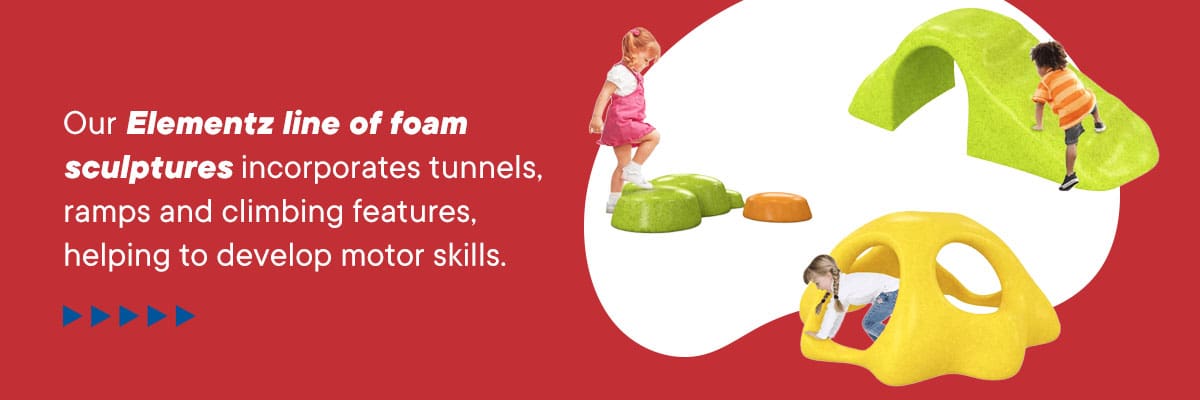
4. Play Panels
Interactive play panels are a welcome addition to any hospital or therapy center. They present plenty of learning and development opportunities for kids or toddlers. Activities like ball popper or the ladybug game allow little ones to flex their physical and mental muscles. These panels add a touch of color while letting kids express their emotions through play.
Empower Kids Through Play With Soft Play
Play is a powerful tool that helps kids grow, socialize and express their emotions. Whether in a hospital, school or therapy office, a playground opens up a world of imagination.
Discover how Soft Play lets kids be kids. We offer customizable equipment to fit any space, budget and ability, helping you harness the extraordinary power of play to develop healthy minds and bodies. Browse our innovative product range or contact us today for a free design consultation.
